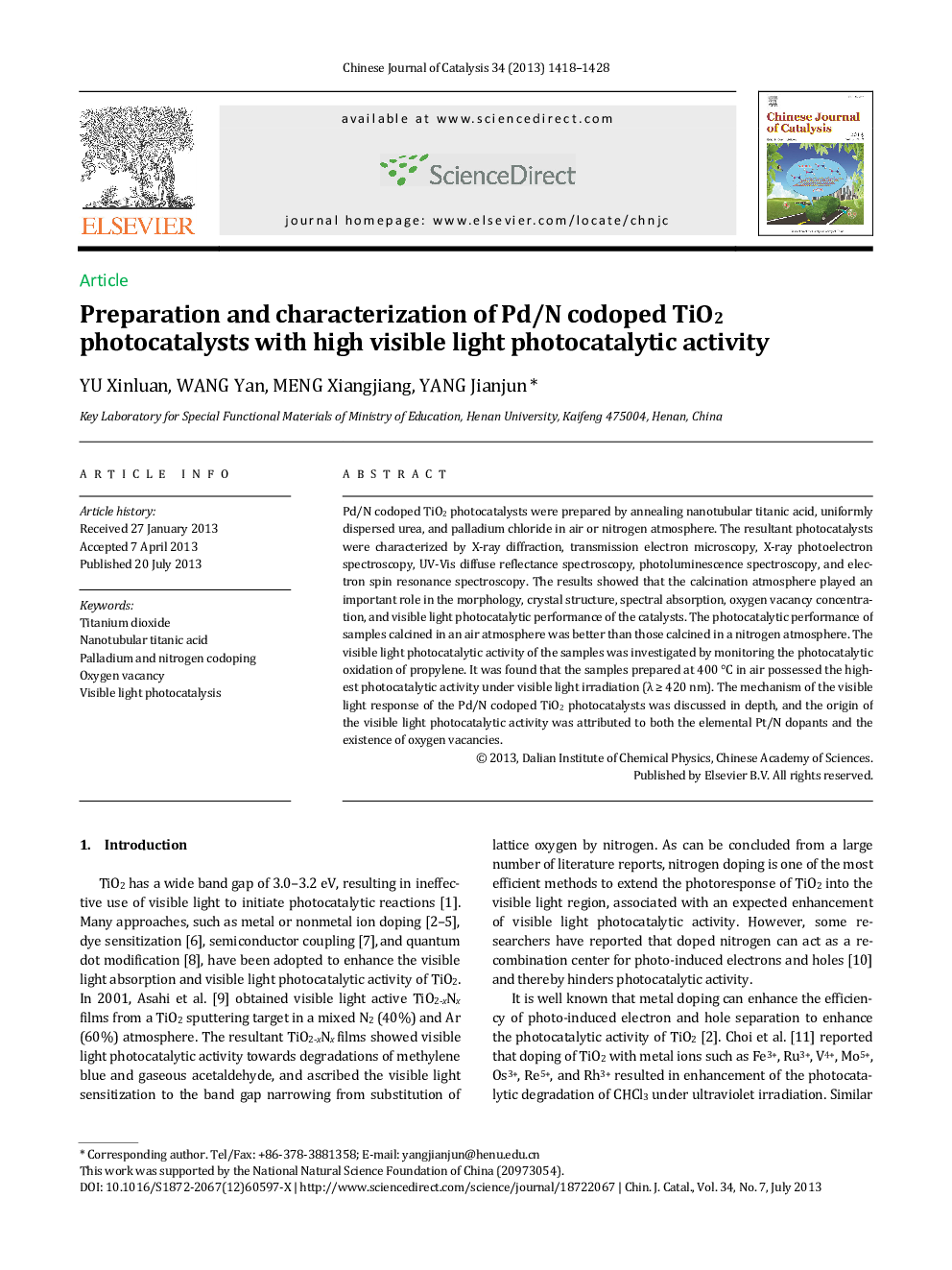| Article ID | Journal | Published Year | Pages | File Type |
|---|---|---|---|---|
| 59992 | Chinese Journal of Catalysis | 2013 | 11 Pages |
Pd/N codoped TiO2 photocatalysts were prepared by annealing nanotubular titanic acid, uniformly dispersed urea, and palladium chloride in air or nitrogen atmosphere. The resultant photocatalysts were characterized by X-ray diffraction, transmission electron microscopy, X-ray photoelectron spectroscopy, UV-Vis diffuse reflectance spectroscopy, photoluminescence spectroscopy, and electron spin resonance spectroscopy. The results showed that the calcination atmosphere played an important role in the morphology, crystal structure, spectral absorption, oxygen vacancy concentration, and visible light photocatalytic performance of the catalysts. The photocatalytic performance of samples calcined in an air atmosphere was better than those calcined in a nitrogen atmosphere. The visible light photocatalytic activity of the samples was investigated by monitoring the photocatalytic oxidation of propylene. It was found that the samples prepared at 400 °C in air possessed the highest photocatalytic activity under visible light irradiation (λ ≥ 420 nm). The mechanism of the visible light response of the Pd/N codoped TiO2 photocatalysts was discussed in depth, and the origin of the visible light photocatalytic activity was attributed to both the elemental Pt/N dopants and the existence of oxygen vacancies.
Graphical abstractPd/N codoped TiO2 photocatalysts showed high efficiency for the visible light photocatalytic oxidation of propylene. The origin of visible light photocatalytic activity was attributed to both Pt and N dopant elements and the formation of single-electron-trapped oxygen vacancies.Figure optionsDownload full-size imageDownload as PowerPoint slide
